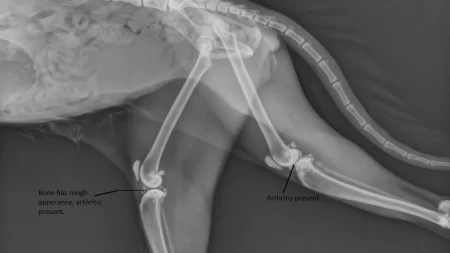According to research, a cat’s purr may have therapeutic properties. Cats purr in a range of 20-140 Hz, which is known to be medically therapeutic for illnesses in humans. The vibrations produced by a cat’s purr can have therapeutic benefits for the cat and its owner.
It has been demonstrated that the frequency of the vibrations produced by a cat’s purr can aid in wound healing and inflammation reduction. This explains why your cat may purr more while healing from an illness or injury.
The Science Behind Cat Purring
Why Do Cats Purr?
The precise reason cats purr remains an area of active research. However, scientists believe it serves multiple purposes, including:
- Communication: Kittens purr to communicate with their mothers, and adult cats often purr to express contentment, solicit attention, or appease others.
- Self-healing: Purring may stimulate the production of endorphins, which have pain-relieving and mood-boosting effects. Additionally, the vibrations produced by purring may promote tissue healing and bone density.
- Stress reduction: Purring has been shown to lower stress levels in both cats and humans.
How Does Purring Affect the Cat’s Body?
When a cat purrs, its diaphragm muscles contract, generating a rhythmic vibration between 25 and 140 Hertz. This frequency range coincides with frequencies known to promote bone and tissue healing in various animal models.
Similar Effects in Humans
Early research suggests that the vibrations produced by a cat’s purr may have beneficial effects on human health. These include:
- Reduced pain: Studies have found that listening to purring sounds can reduce pain perception in humans.
- Improved sleep: Purring sounds may induce relaxation and promote better sleep quality.
- Lowered blood pressure: Exposure to purring sounds may lead to a slight decrease in blood pressure.
The Healing Powers of Cat Purring
Release of Endorphins
Purring may stimulate the release of endorphins, natural painkillers, and mood regulators, in both cats and humans. This could contribute to the observed pain-relieving and stress-reducing effects of purring.
Potential for Stress Reduction and Improved Health
Several studies have shown that owning a cat and interacting with it can reduce stress, lower blood pressure, and improve overall well-being. While purring is likely just one factor contributing to these benefits, it may play a significant role.
Claims and Experiences from Cat Owners
Many cat owners anecdotally report that their feline companions seem to purr more when they are feeling unwell or injured. Additionally, some individuals claim that their cats’ purrs have helped them heal from illness or surgery. While these experiences are valuable, they do not provide conclusive scientific evidence.
Debunking the Myth
Lack of Scientific Evidence
Despite the promising research, conclusive scientific evidence regarding the direct healing effects of cat purring in humans remains scarce. More controlled studies are needed to fully understand the mechanisms behind these potential benefits.
Other Factors that Could Contribute to Healing
It is important to note that the perceived healing effects of a cat’s purr might be attributed to other factors, such as:
- Reduced stress: As mentioned earlier, owning a cat and interacting with it can significantly reduce stress, which can have a positive impact on overall health and healing.
- Improved mood: The companionship and love provided by a cat can boost mood and promote feelings of well-being, which can indirectly contribute to healing.
- Enhanced social interaction: Caring for a cat can provide a sense of purpose and responsibility, leading to increased social interaction and decreased feelings of loneliness, which can positively impact mental and physical health.








